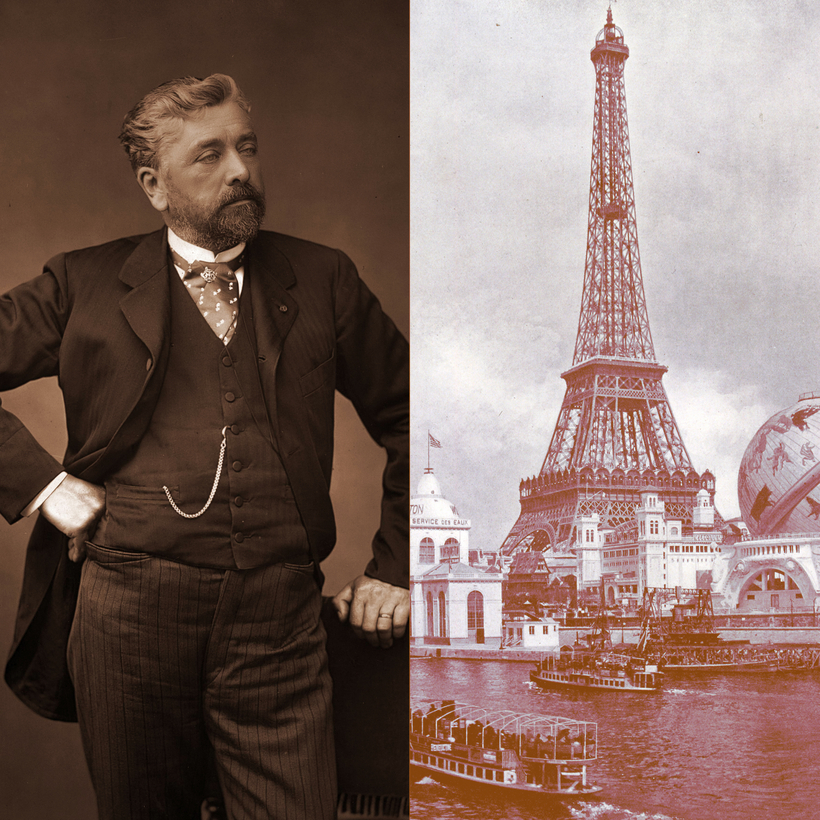Gustave Eiffel is said to have joked that he was in danger of becoming jealous of his tower in Paris because it was more famous than him. He had a point. The Eiffel Tower has tended to eclipse the more than 500 other projects completed across 30 countries by France’s greatest engineer in the second half of the 19th century.
Now his descendants are seeking to use the centenary of his death to set the record straight. They are organizing events in France and around the world to highlight the extraordinary life and legacy of the so-called Magician of Iron.
“We think it is the man and not only the tower that is of interest,” Myriam Larnaudie-Eiffel, 58, his great-great-granddaughter, told The Times. “We want to take a look at who he was and what he wanted.”

She said that Eiffel had been not only an exceptional engineer but also an audacious businessman who was liked by his workers. He later gave up his entrepreneurial and engineering career to turn to research and study, notably on aerodynamics.
His descendants have made an official request to President Macron to transfer his remains from Levallois-Perret, on the outskirts of Paris where he had his workshop, to the Panthéon, the mausoleum for great French citizens such as the writers Alexandre Dumas and Victor Hugo, or Jean Monnet, the civil servant and diplomat who was one of the founding fathers of the EU. Macron has yet to give his response.
The centenary celebrations will involve events around the world, from Porto where Eiffel built the Maria Pia Bridge over the Douro River, to Budapest where he built the Pest railway station, and Estonia where he was responsible for the Ristna lighthouse in the Baltic Sea. The family also hopes to hold celebrations in New York, where he built the frame for the Statue of Liberty.

In France, there will be events in Bordeaux, where he put up a 500m-long railway bridge at the age of 26, as well as Nice, which is home to his observatory, and the Cantal département of southern France, where he put up the Garabit viaduct.
Family members say they are planning to travel around the world to take part in debates and symposiums on their illustrious ancestor. There will be biographies and a documentary on French television to coincide with the centenary of his death, at the age of 91, in December 1923.
“We think it is the man and not only the tower that is of interest.”
“The centenary is important to the family because it will enable us to look at his work with affection but also with maturity,” Larnaudie-Eiffel said, adding that the full extent of Eiffel’s legacy was still being discovered. Recently, for instance, a movable bridge he designed had been found in Taiwan.

Larnaudie-Eiffel added that the UK, home of the Industrial Revolution, had been a “great source of inspiration” for Eiffel and a launchpad for his career when engineers in London sat up and took notice of the railway bridge he had built in Bordeaux.
The centenary will also be marked by an exhibition staged by the Association of the Descendants of Gustave Eiffel. This will focus on Eiffel’s battle against rival engineers from around the world for the right to build a monument for the 1889 Universal Exhibition in Paris; an event boycotted by Britain because it celebrated the downfall of the French monarchy.
Eiffel won and his design for a puddled iron tower was chosen, despite grumblings from Parisian conservatives denouncing what they viewed as an eyesore. The tower, then the highest in the world, was built in 26 months, with the 18,038 metallic parts made in Eiffel’s factory in Levallois-Perret before being transported to the construction site, where they were put together by up to 300 workers using 2.5 million rivets.

Larnaudie-Eiffel said the project was impressive not just because of the engineering skills but because her ancestor had financed 80 percent of the costs himself.
The exhibition will begin outside the Eiffel Tower this spring, before traveling around France. It will also focus on the aftermath of Eiffel’s triumph at the 1889 Universal Exhibition, when his rivals were piqued and sought to draw up plans for an even higher tower.
Adam Sage is the Paris correspondent for The Times of London. He has covered five presidential elections and countless scandals

